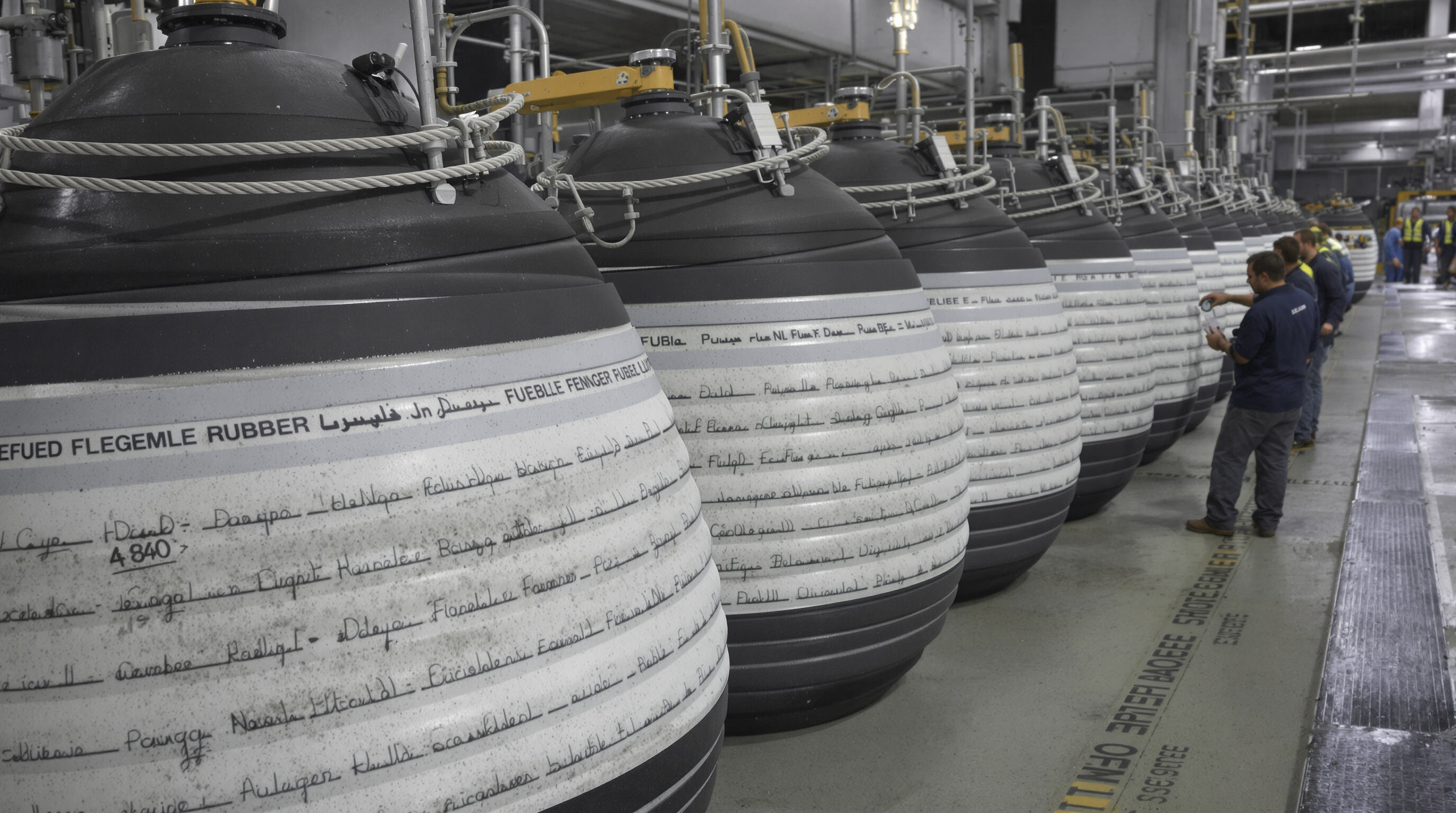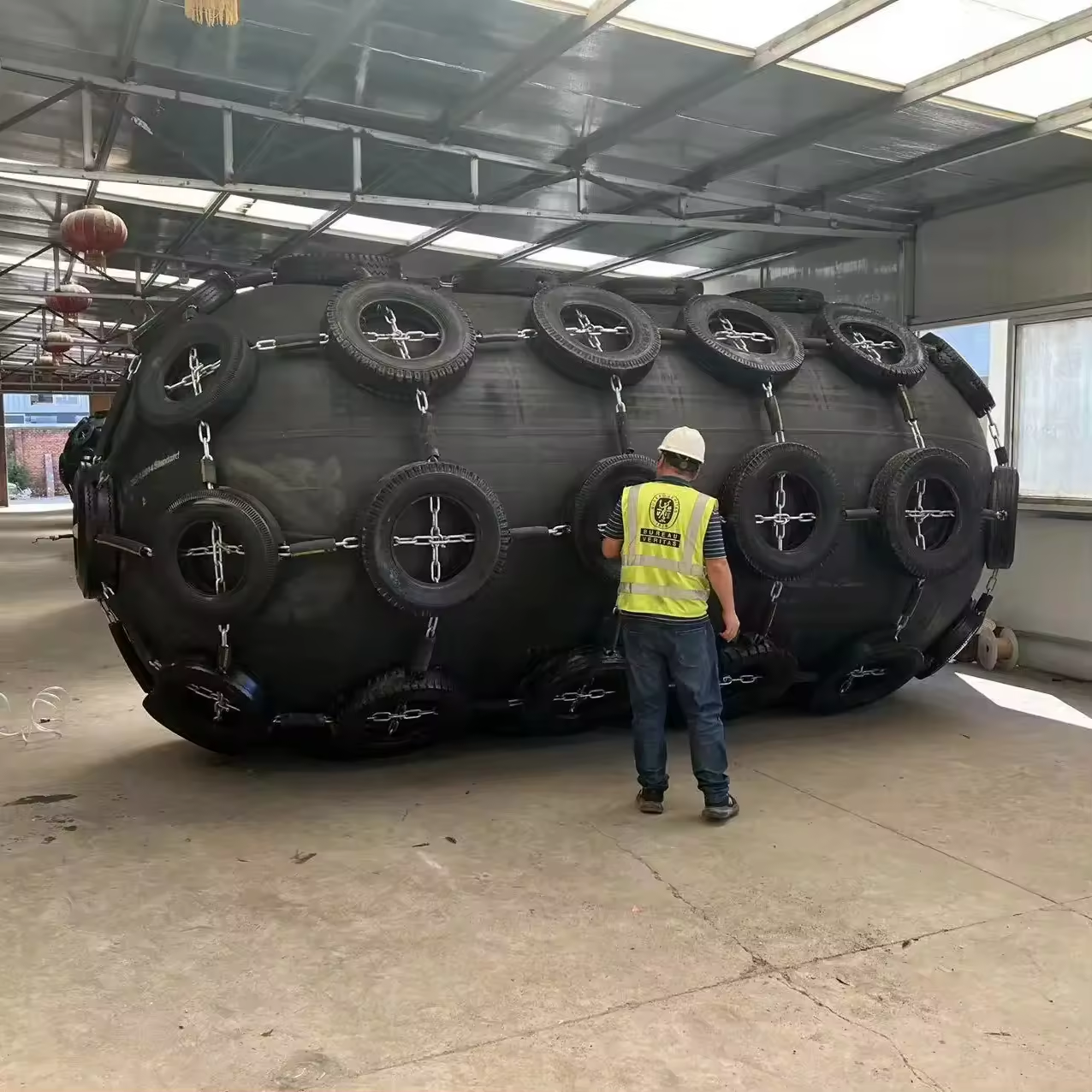Understanding Pneumatic Rubber Fenders and Key Certification Standards
What Are Pneumatic Rubber Fenders and Why Certification Matters
Pneumatic rubber fenders work as air filled safety devices on boats and ships. They help soak up the energy when vessels come into port or dock alongside other structures. What makes them special is their ability to compress because they're built with multiple layers of rubber mixed with textile cords running through them. This design gives them better protection against impacts than just regular solid foam options would offer. Getting proper certification means these fenders pass strict tests regarding how much pressure they can handle between 50 kilopascals and 80 kilopascals plus their capacity to absorb energy. This kind of testing is really important since it stops damage happening both to the ship itself and whatever docking facilities exist at the harbor. If manufacturers skip getting approval from groups such as China Classification Society, Det Norske Veritas, or Bureau Veritas, there's a good chance they'll end up selling products that don't last long enough in salt water conditions where corrosion happens fast.
Overview of CCS, DNV, and BV in Marine Safety and Compliance
- CCS: Mandates tensile strength ≥16 MPa and elongation ≥350% for fender rubber compounds in Chinese waters.
- DNV: Requires annual air leakage testing and chain corrosion resistance validation for European offshore terminals.
- BV: Enforces traceable material documentation and batch-level ISO 17357:2014 compliance for Mediterranean ports.
These class societies collectively prevent 87% of docking-related incidents in certified ports by eliminating substandard fenders from supply chains.
The Role of ISO 17357:2014 in Pneumatic Rubber Fender Durability
The ISO 17357:2014 standard specifies minimum rubber thickness (≥10 mm for Ø2m fenders), safety valve pressure limits, and UV/ozone resistance protocols. Manufacturers adhering to this standard report a 40% longer service life in tidal zones compared to non-certified alternatives, as validated by accelerated aging simulations exceeding 1,500 salt spray hours.
Certification Requirements for Pneumatic Rubber Fenders by Leading Class Societies

CCS Certification Criteria for Pneumatic Rubber Fenders
The China Classification Society (CCS) mandates pneumatic rubber fenders undergo cyclic compression testing simulating 10,000+ berthing impacts. Products must maintain ≥80% energy absorption efficiency post-testing per ISO 17357:2014 Annex B. CCS also requires a minimum tear strength of 30 kN/m and compression set values below 25% after 22-hour load tests.
DNV’s Technical Standards for Marine Fender Systems
DNV-ST-0378 standards emphasize material integrity under extreme pressures, requiring fenders to withstand 0.7 MPa internal pressure without shell delamination. The 2023 guidelines heightened ozone resistance requirements, mandating less than 15% surface crack development after 96 hours of accelerated aging tests.
BV Approval Process and Compliance Benchmarks
Bureau Veritas (BV) certification follows a three-stage validation process:
- Compound verification (carbon black content ≥28% for UV resistance)
- Full-scale prototype testing (1.5x design pressure for 72 hours)
- Production audits with 5% batch sampling for hardness (±5 IRHD) and tensile strength (±1.5 MPa tolerances)
Comparing CCS, DNV, and BV Testing Protocols for Pneumatic Rubber Fenders
| Criteria | CCS | DNV | BV |
|---|---|---|---|
| Compression Cycles | 10,000 | 15,000 | 12,500 |
| Pressure Hold Time | 24 hours | 48 hours | 72 hours |
| Aging Test Standard | ISO 188 (100°C x 70h) | ISO 1431-1 (50 pphm ozone) | NF T46-038 (70°C x 168h) |
| Energy Absorption | ≥80% retention | ≥85% retention | ≥75% retention |
While all three align with ISO 17357:2014’s core durability requirements, they differ in stress-testing intensity and compound analysis, requiring manufacturers to tailor designs for regional compliance.
Top Certified Pneumatic Rubber Fenders: Performance and Manufacturer Insights
Leading Manufacturers of ISO 17357:2014-Compliant Pneumatic Rubber Fenders
When making pneumatic rubber fenders that meet ISO 17357:2014 standards, manufacturers rely on multi-layer rubber designs strengthened with high tensile tire cords. This construction helps them stand up against wear and tear from abrasion, ozone exposure, and temperature extremes ranging from -30 degrees Celsius down to +50 degrees Celsius. Most of these fenders last around seven to ten years in typical sea conditions, keeping their ability to absorb impact at about 85% to 92%. That kind of efficiency matters a lot when vessels come alongside docks. Top quality producers often have CCS, DNV, and BV certification marks on their products, which they pair with cutting edge vulcanization methods. These approaches boost tear resistance to at least 30 kilonewtons per meter and allow for compression up to 60% deflection before failure occurs. Independent labs run tests to check how well these fenders maintain their force absorption properties after millions of compressions and measure just how much UV light they can withstand before showing signs of breakdown.
Testing, Compliance, and Traceability in Pneumatic Rubber Fender Certification
How Pneumatic Rubber Fenders Are Tested for Durability and Safety Compliance
Rubber fenders used in pneumatic systems go through all sorts of testing before they can satisfy those tough CCS, DNV, and BV requirements. The manufacturers run these things through accelerated aging tests and put them through their paces with cyclic loading to see how they hold up against constant ship impacts and exposure to sunlight. According to ISO standard 17357 from 2014, there's a baseline requirement for energy absorption efficiency at around 55%, plus the fender needs to survive about half a million compression cycles without falling apart structurally. Some research out there indicates that fenders which haven't gone through proper certification tend to break down roughly 40 percent quicker when sitting in salt water. And then there are pressure resistance checks too, making sure these fenders stay stable across operating pressures ranging from 0.5 MPa right up to 1.2 MPa, something really important for anyone working offshore.
Role of Independent Laboratories in Verifying ISO 17357:2014 Standards
Third-party laboratories validate compliance through:
- Material integrity tests: Measuring tensile strength (≥16 MPa) and elongation at break (≥350%).
- Chemical resistance audits: Evaluating swelling rates in hydrocarbons and seawater.
- Production batch sampling: Ensuring rubber compound formulations match certified specifications.
A 2023 Global Marine Safety Report found that 78% of certification failures stemmed from inconsistent polymer ratios or filler content—issues typically identified during independent lab audits. These labs also cross-check manufacturer-submitted data against physical test results to ensure accuracy.
Documentation and Traceability in CCS/DNV/BV Certification Processes
Certification bodies require full traceability from raw materials to final production batches. Key documentation includes:
| Certification Body | Traceability Requirements | Retention Period |
|---|---|---|
| CCS | Polymer source verification, vulcanization logs | 10 years |
| DNV | ISO 17357 test reports, QC inspection records | 15 years |
| BV | Batch-specific material certificates | 12 years |
A recent industry analysis highlighted that 92% of CCS-approved manufacturers now use blockchain-enhanced traceability systems to combat counterfeit documentation. BV-certified suppliers must also provide annual third-party audit reports confirming adherence to declared rubber-to-filler ratios (typically 60:40).
FAQ Section
What are pneumatic rubber fenders used for?
Pneumatic rubber fenders are used as air-filled safety devices that absorb energy during docking operations, preventing damage to vessels and docking facilities.
Why is certification important for pneumatic rubber fenders?
Certification verifies that the fenders meet stringent pressure handling and energy absorption standards, ensuring durability and safety in marine environments.
What standards do manufacturers need to meet for pneumatic rubber fenders?
Manufacturers need to adhere to standards such as ISO 17357:2014 and obtain approvals from classification societies like CCS, DNV, and BV to ensure product quality and compliance.
How do independent laboratories verify compliance?
Independent labs conduct material integrity tests, chemical resistance audits, and sample production batches to ensure adherence to certified specifications and standards.
What role do class societies play in pneumatic rubber fender certification?
Class societies like CCS, DNV, and BV set testing and documentation standards that manufacturers must meet to certify their products, preventing substandard fenders from entering the market.
Table of Contents
- Understanding Pneumatic Rubber Fenders and Key Certification Standards
- Certification Requirements for Pneumatic Rubber Fenders by Leading Class Societies
- Top Certified Pneumatic Rubber Fenders: Performance and Manufacturer Insights
- Testing, Compliance, and Traceability in Pneumatic Rubber Fender Certification
-
FAQ Section
- What are pneumatic rubber fenders used for?
- Why is certification important for pneumatic rubber fenders?
- What standards do manufacturers need to meet for pneumatic rubber fenders?
- How do independent laboratories verify compliance?
- What role do class societies play in pneumatic rubber fender certification?


